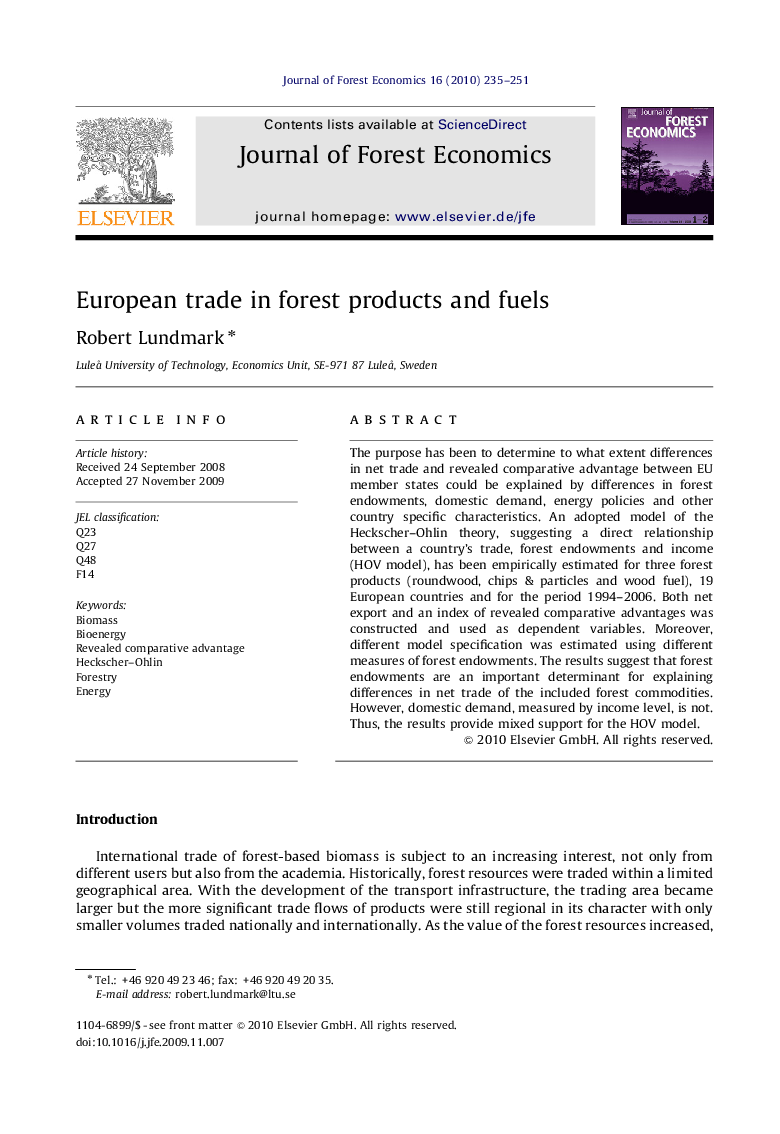| Article ID | Journal | Published Year | Pages | File Type |
|---|---|---|---|---|
| 92039 | Journal of Forest Economics | 2010 | 17 Pages |
The purpose has been to determine to what extent differences in net trade and revealed comparative advantage between EU member states could be explained by differences in forest endowments, domestic demand, energy policies and other country specific characteristics. An adopted model of the Heckscher–Ohlin theory, suggesting a direct relationship between a country's trade, forest endowments and income (HOV model), has been empirically estimated for three forest products (roundwood, chips & particles and wood fuel), 19 European countries and for the period 1994–2006. Both net export and an index of revealed comparative advantages was constructed and used as dependent variables. Moreover, different model specification was estimated using different measures of forest endowments. The results suggest that forest endowments are an important determinant for explaining differences in net trade of the included forest commodities. However, domestic demand, measured by income level, is not. Thus, the results provide mixed support for the HOV model.
